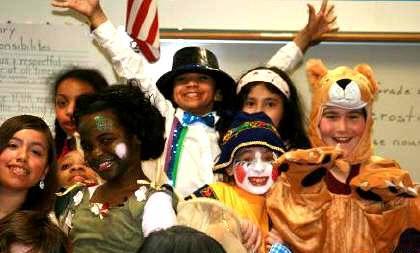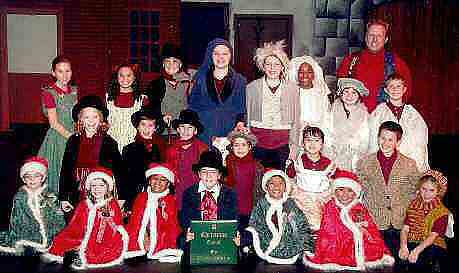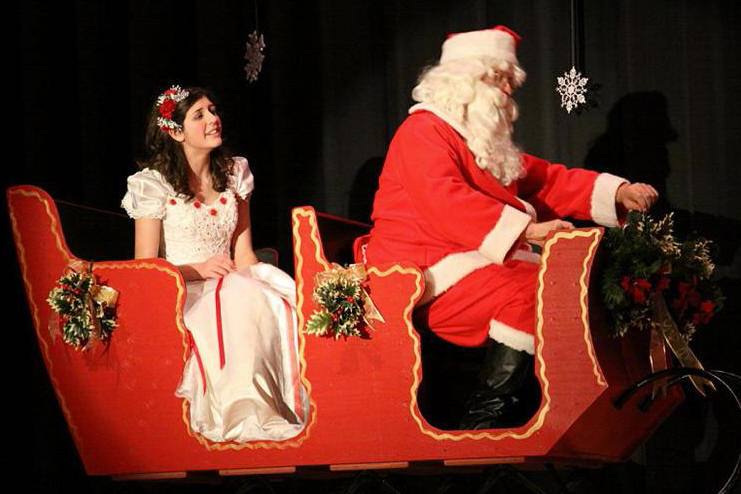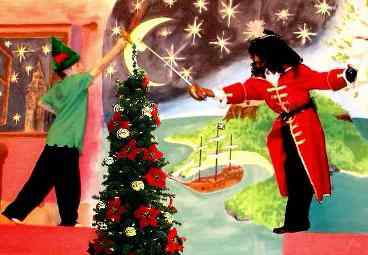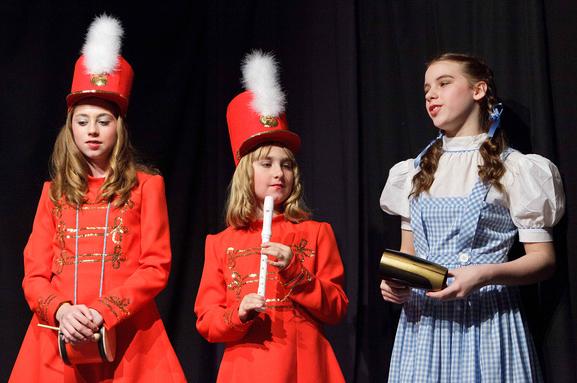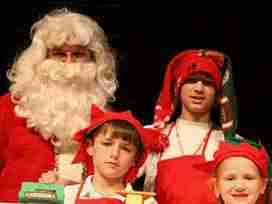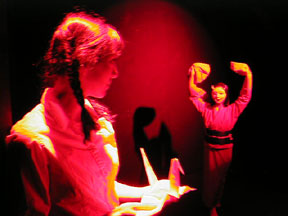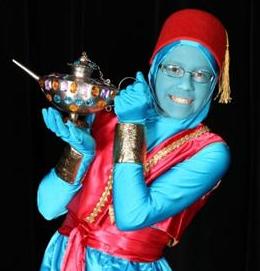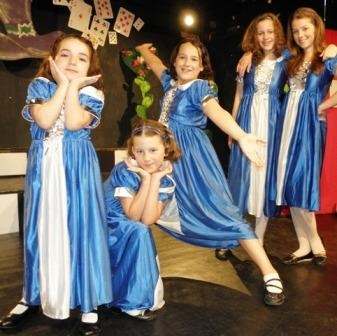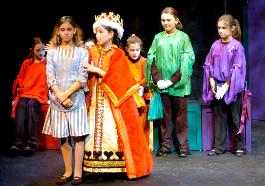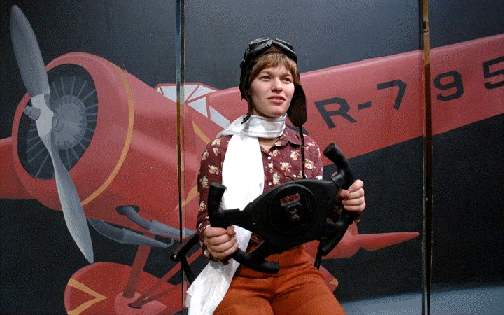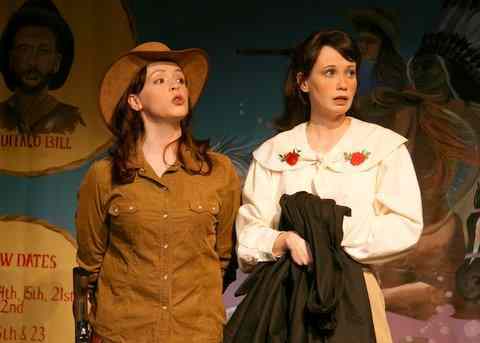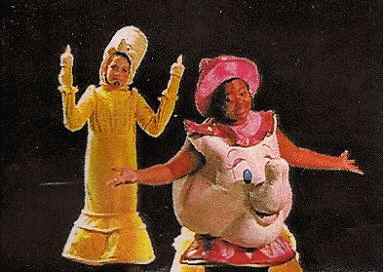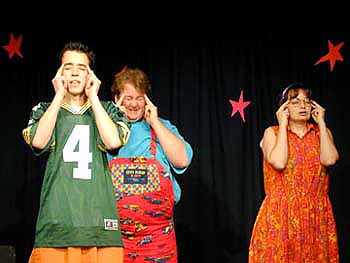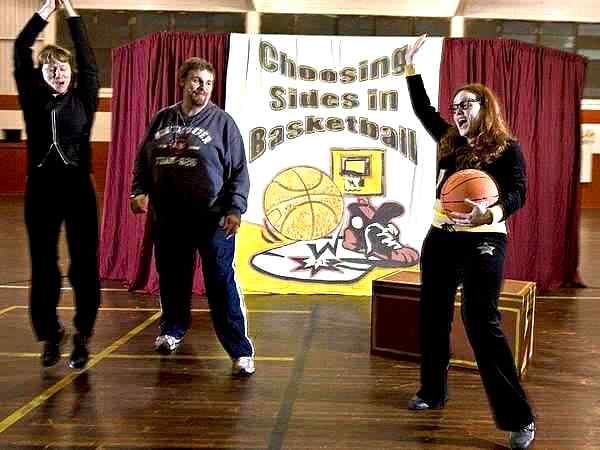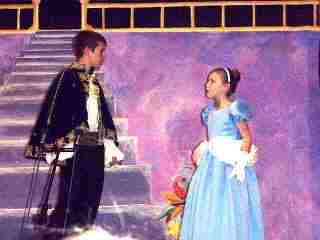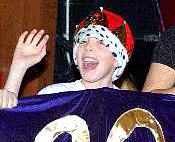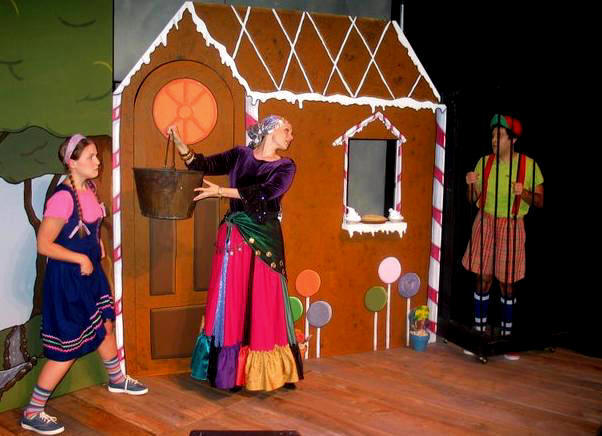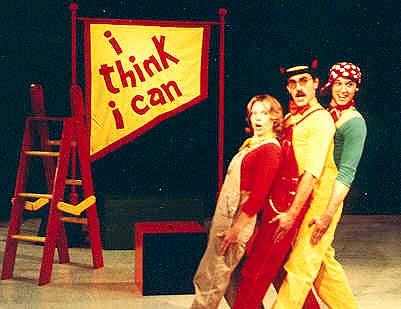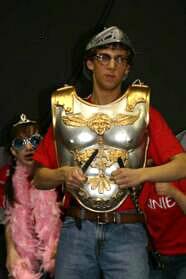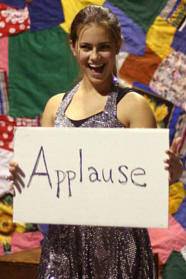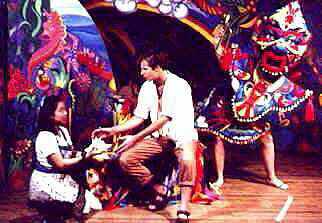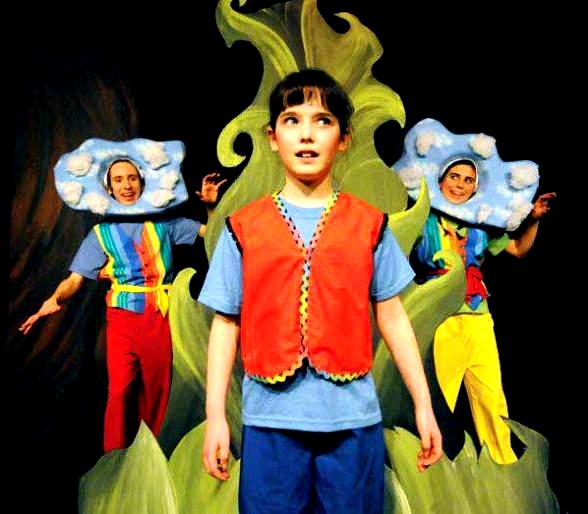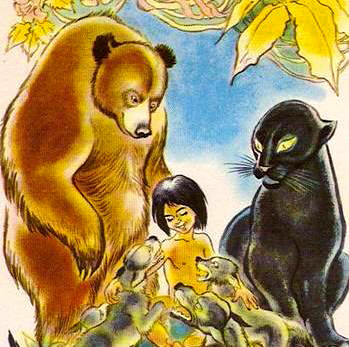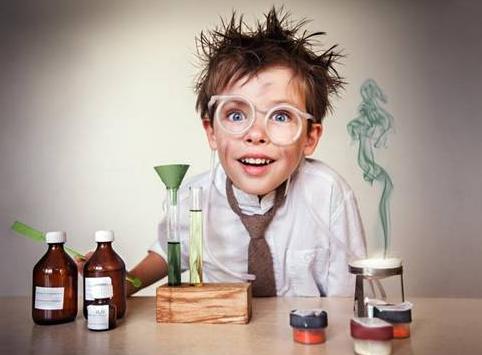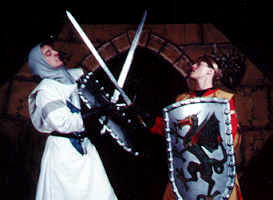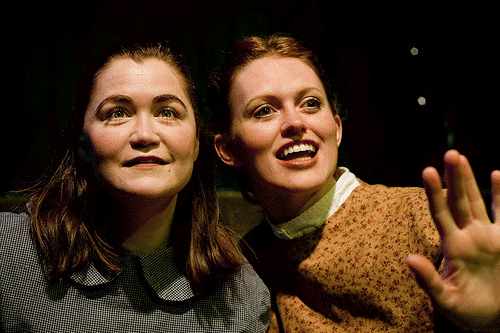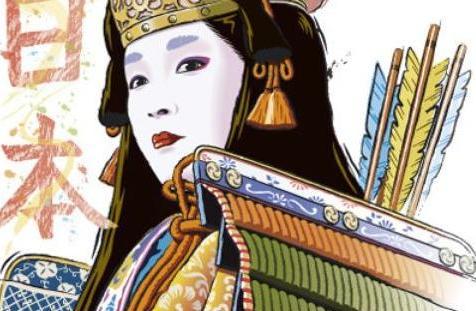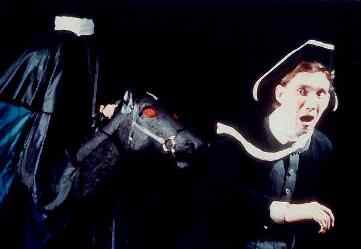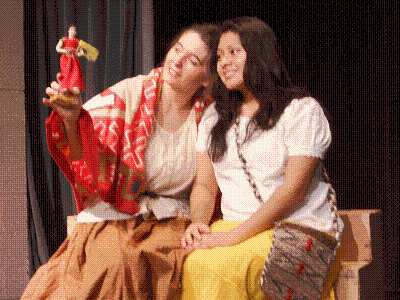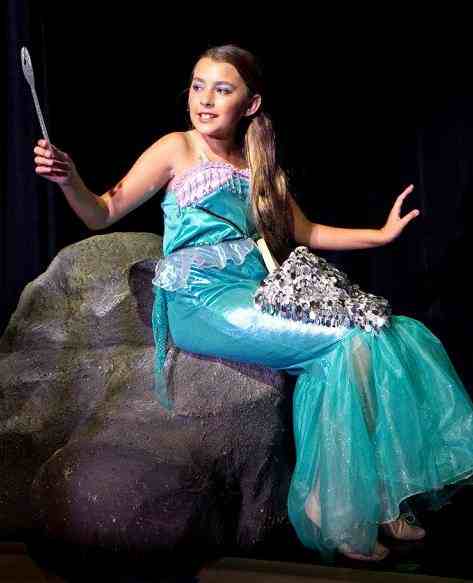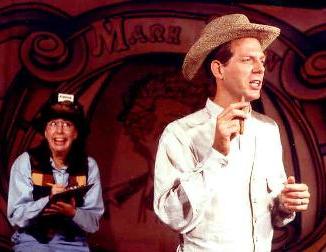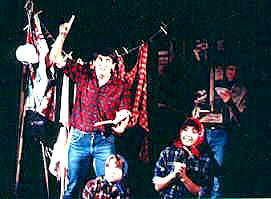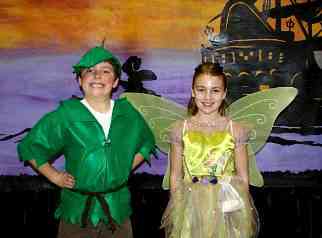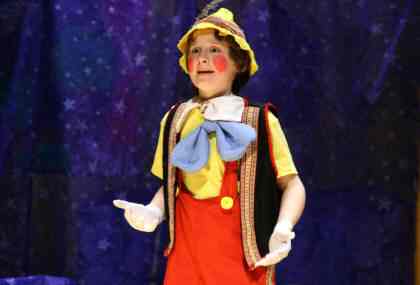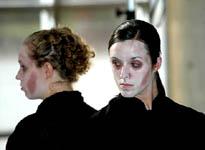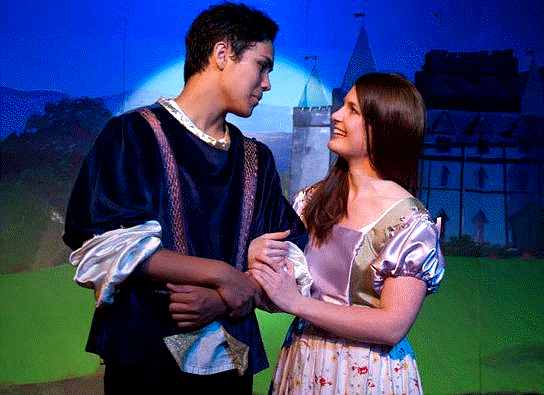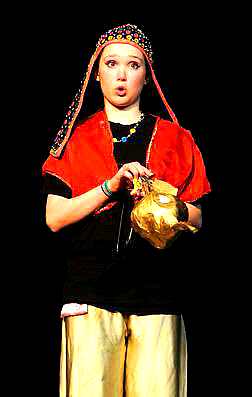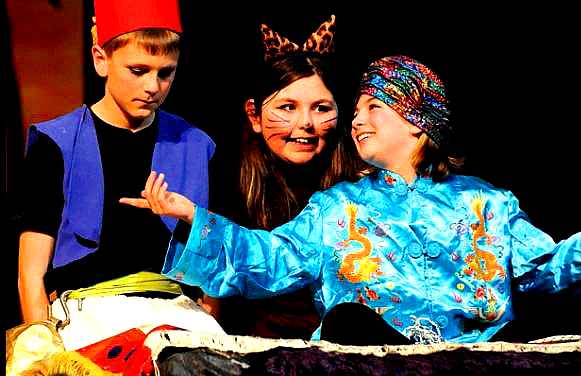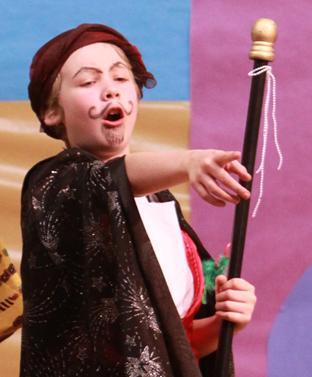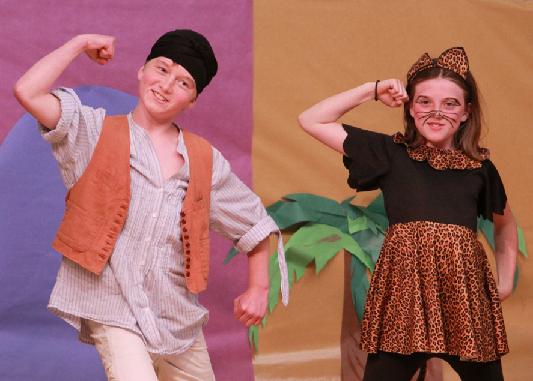The
Pinocchio Game: Kids Become Puppets
A Fun Idea for Creative Dramatics
This is a really great way to
start a rehearsal on a physical high. It is a warm-up, stretching
exercise with dramatic content to keep it focused. It is named after
the wooden puppet (if you do it at Christmas, you can call it The
Nutcracker Game). The game consists basically of a narrative
pantomime of the wooden puppet SLOWLY coming to life. Here are some
things you can say to play the game:
Right now you're made completely
of wood. Your arms and legs are carved from a single piece of wood.
You can't move any part of yourself at all.
Now a magic spell has begun. It
begins at the top of your head. The spell moves down slowly until
your head down to your eyebrows is flesh and blood. Try and move your eyebrows.
ArtReach’s Pinocchio!
Kids Become Puppets!
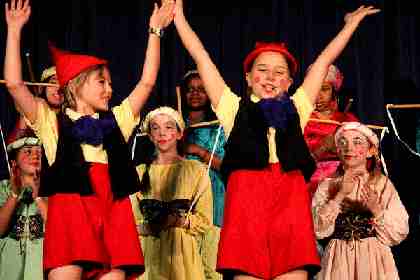
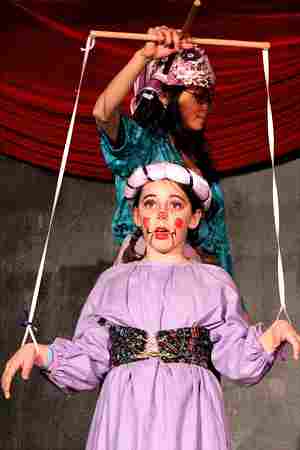
Kenwood School, Minneapolis -- 3rd, 4th and 5th Graders.
The spell keeps moving down. Now
you can move your eyes! All your life you've been staring straight
ahead, and now you can look to the sides. The spell gets to
your ears and your nose. See if you can wiggle them. The spell
gets to your mouth. You can smile. It feels strange at first, and
probably looks pretty strange too, but you grow more comfortable with
it. Try some other facial expressions as well.
Slowly you discover that you can
turn your head. Careful! You can look up and down carefully as well.
Look! You have feet! This is the first time you were ever sure.
The spell reaches your
shoulders. But remember, your arms and hands are still attached to
your body, since you are carved from a single piece of wood, so you
can move ONLY your shoulders. Try some circles. Do you feel a tingle
up and down your spine? That's the magic working.
The spell reaches your chest.
You can puff it out like a soldier. Your elbows can move now, but
still not your hands. As the spell goes lower, see if you can pull
your left hand away from your body. Ooofff! You did it.
Bring your hand up to your face
and study it. See if you can move the fingers. Wow! You've never seen
anything so beautiful! See if you can get your right hand free as
well. Does it move too?
The spell has reached your
waist. Carefully bend forward, to the side. See if you bend
backwards. See if you can make a circle. The spell reaches your hips,
but your knees are still locked together and your feet are still
attached to your pedestal. The spell gets to your knees. See if they bend!
Reach down and see if you can
pull your left foot free. Ooofff! Point the toe. Flex the foot. Make
little circles. Now see if you can get your right foot free. You're
all real now! See how you can move. Careful at first – these are
your first steps! Let's find all the ways our new bodies move!
And so on&ldots;
Aladdin
Drama Fun and Activities
Performing Aladdin?
Try these in your classroom first.
MAGIC CARPET:
Have children draw a place on the floor around their desk. Pretend it
is a magic carpet. Tell them to close their eyes and wait until you
count: one, two, three! Imagine that you are flying on a magic
carpet. What do you see below you? What do you see above you?
Where do you want the carpet to take you?
IMAGINARY FRIENDS:
Have the children think about what kind of side kick they would like
to have with them all the time, the way Aladdin has his cat Persia.
What kind of animal would you have? If they could talk what would be
their language? Would they help you in times of trouble? If they got
in trouble what would you do for them?
PALACES:
Have the children compare their house to a palace? What would a
palace have that you don’t have at home? What would the palace
be made of? Sugar, chocolate, ice, glass? What would your room
in the palace look like? Would you let other people live there too?
MAGIC STAFF:
Omar the Magician has a magic staff where he keeps all his magic
power. If you had magic power where would you keep it? In your
backpack, in your hat, in your desk? Name two things that your power
lets you do that you cannot do without it. Would you want to be
invisible, to fly, to have new toys? If you could give one of your
powers away who would you give it to?
PRINCES AND PRINCESSES:
Pretend you are a prince or princess. What clothes would you wear and
where would you live? Would you go to school? Would you have to do
homework? If you were a princess what would be different from the way
you are now?
MUSIC:
Listen to Scheherazade by Nikolai Rimsky-Korsakov. Discuss the
origins of the piece and talk about which parts you liked best. Read
the story of Scheherazade and talk about how the music fits the parts
of the story.
Listen
to Scheherazade (Vienna Philharmonic)
DIFFERENT STORIES:
The original story in this Guide is quite different from the story in
the play. Can you identify the different parts? Why do you think the
story is different? If you could change the story what would you put in?
CREATIVE WRITING:
Aladdin is just one of many stories from The Arabian Nights.
Have the children write a story that is all their own using the same
characters: Boy, girl, magician, sultan, genie – maybe even give
them different names. Discuss what their new story is about. Love,
power, freedom, good over evil? What can the characters do to
prove they have these things?
Creative
Ideas for Beauty and the Beast Activities
Beauty and the Beast: Exercises
& Activities
Discussion: Before the Play
Talk about theatre and what a
play is. What other plays have you seen? Describe them to
the class. Why do you think certain parts of those plays are
memorable to you? What do you expect this play will be
like? What is the difference between seeing a play on
television or movies and seeing actors perform it live?
Discuss you students the proper
etiquette for audience members during a live performance.
Impress upon them that the actors they see are live people who care
very much how you respond to the work they are doing. Young
audience members should learn the meaning of applause and laughter
and that they should be polite to the people who are performing for them.
Read the original story and the
synopsis of the play that appear in this Teachers Guide. How
are the stories alike? How are they different? Talk about
the practical consideration of putting on a play and why the actors
might need to adjust the story in order to present it on stage.
The play takes place in France
where they used to tell fairy tales. Look up France on the Internet
and in books, locate it on the globe. Talk about what we know
about the country, history, music and the people. What kinds of
clothes do they wear and what did the wear in years past?
Remember your answers when you see the actors in their costumes.
Or if you are performing in the play use the pictures you find to
help create your costume.
During the play, children will
be asked to participate by helping make sounds, wind, music, wolves,
etc.. Describe a storm, scary forest, angry mob or ferocias
wolves and talk about how they sound and move. Point out the
actual events or other plays or movies you may have seen. How
does your play relate to events in "real life” or other "fantasies”?
Talk about clothes and what they
say about your personality. Name some of your favorite movie
stars or musicians and how the clothes they wear shape the image we
have of them. What makes some clothes come into fashion why
others go out of style. Describe your favorite shoes, hat and
coat. What makes you like them? How do you feel when you
wear them?
Discussion: After the Play
Discuss in more detail the play
you have just seen. Who is your favorite character and
why? Talk about how the actors created the illusion of many
things such as the castle, the forest, the marketplace and the
invisible painting that Marcel sets up. Talk about how you were
asked to sue you imagination as opposed to movies and cartoons that
show you a picture of everything.
Talk about some of the
characters you saw in the play such as the Villagers and Household
Servants. What did they do with their voices and bodies to
convey their character to you? Would you like to try your hand
at acting? Write down the names of characters such as Beast and
Wolves. Come up with crazy names as Huey Kazooie and show the
class how Huey would act and talk. Choose other characters,
perform them and ask your classmates to guess who you are.
Charles Perrault wrote
many play besides Beauty and the Beast. What titles are you
familiar with? Can you recount these stories? Which do
you like best and why?
What do you think a magical
Prince-turned-Beast would actually look like? Draw a picture of
the Beast showing how he thought he looked once like a Prince.
Draw a picture of the Prince before he turned into a Beast.
What is the meaning of this
famous story? When people say "his bark is worst than his
bite” what do you think they mean? The Prince embarrassed
when he realized he had been tricked and turned into the
Beast. What might he have done to prevent this embarrassment?
Classroom Activities
CLASS STORY: Read a
version of the story as a class. View an animated version and
compare the two. After seeing the show, compare all three genres.
BEING A HERO: Ask the
class what it means to be a hero. Brainstorm a list of
qualities that make a person seem like a hero. In groups, pick
the most important qualities and identify heroes today. Share
as a class. Discuss whether or not there is a hero in Beauty and the Beast.
JOURNAL ACTIVITY: Have
students imagine that they are in Beauty’s shoes. In order
to save their fathers, the students have to live with a terrifying
beast. What would it feel like? Would the students have the courage
to do it?
"YOU ARE A
HERO!”: Ask students to write about a time in their lives
when they had to overcome something or helped someone.
FROM THE OUTSIDE IN: Have
students imagine that they could only show people their worst
qualities. No one would ever know the good qualities they had
deep down inside. What would that look like? What would
it feel like? Have students draw what that person would look
like, and write a story to go along with it.
FRACTURED AND FUNNY: Have
students write a fractured version of Beauty and the Beast. Explain
that a fractured fairy tale is made to be humorous by changing the
story in a surprising way; like changing a character or adding
today’s language and events to the story. Encourage the
students to take creative risks.
NOW YOU SEE IT, NOW YOU
DON’T: The element of magic is common in fairytales.
In Beauty and the Beast, things aren’t always what they
seem. Explore optical illusions. Look at examples as a
class. View optical illusions as a class using the internet and books.
AROUND THE WORLD ONCE UPON A
TIME: Research different fairy tales from around the world and
different times.
HANDING INFORMATION DOWN
GENERATION TO GENERATION: Gather students on the rug and have them
sit in a circle. Explain that fairytales were handed down
through word of mouth. Pretend that each student sitting in
that circle is another generation. Play a game of
"telephone” (one person thinks of a sentence and whispers
it in the person sitting next to him/her’s ear, and that person
passes, and so on) to demonstrate how stories change.
RE-WRITE HISTORY: Ask
students to rewrite the ending of Beauty and the Beast. What
would the play version of this look like? After rewriting the
way the story turns out, have students design a scene from their
versions (the castle, forest, etc&ldots;) using only their
imaginations to guide them.
FINISH THE PICTURE: Have
students design what the costumes would look like. Remind them
that the story can take place anywhere and in any time period.
